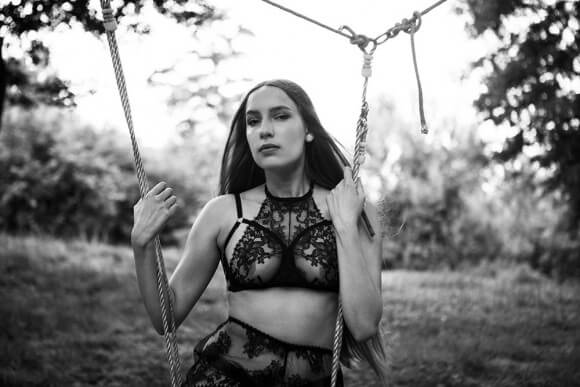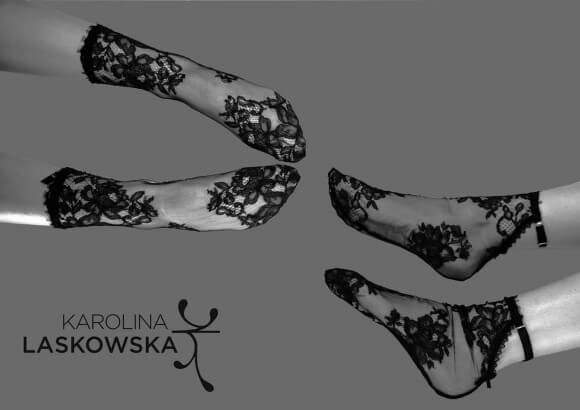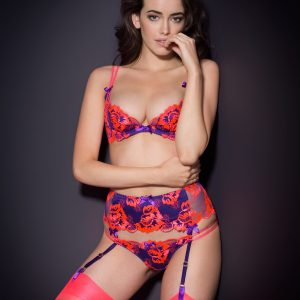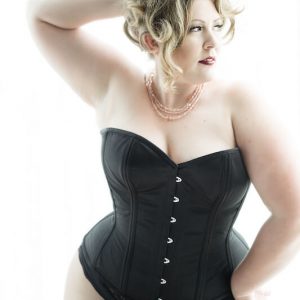Lingerie Business: Why I'm Giving Up On Wholesale And Fashion Seasons
When I first started my lingerie brand ‘Karolina Laskowska’ in the Summer of 2012, I was pretty optimistic about the future. The brand had begun with wholesale requests and my own online shop was doing far better than I’d expected. Everything was new and very little seemed more exciting than the prospect of finding more stockists and joining the lingerie world as a proper lingerie brand.
Fast forward three years and my views on the lingerie industry have turned a lot more cynical. I recently made the decision to drop wholesale and to stop bothering with the traditional fashion seasons that most brands follow. My brand may have only been around for three years, but in that time I’ve seen the lingerie landscape shift incredible amounts.
When I started out, the formula for a lingerie brand was simple: you’d have a collection sampled and take the collection to exhibit at a trade show. Retailers would come to look at the collection and place advance orders. The collection would go into production and would then be sent to the retailers to be sold. At my brand’s beginning, there was never the opportunity to even try to follow this formula. As a student working out of my bedroom, there was simply no way to scrape together the £1000s that exhibiting at a trade show entails. Nevertheless, I was fortunate enough that retailers still seemed happy to order stock in advance and to actually pay for it. This has changed immensely over the last few years.
I’ve noticed two main trends rise amongst retailers: requests for ‘dropshipping’ and ‘sale or return.’ What these both hold in common is the fact that they totally circumvent paying the brand any money up front. Dropshipping is reserved for online retailers and it involves the store using the brand’s imagery, but only placing an order with the brand when they actually sell the products. This is usually done at a lower profit margin to traditional wholesale. Sale or return involves the brand sending through stock to the retailer, but only being paid once items are actually sold. Unsold stock is returned to the brand at the end of the season.

As a designer, I love to use unusual fabrics with limited availability. This means I can often only produce small production runs and I'd much rather offer these directly to a customer than to a retailer. Design by Karolina Laskowska, photography by A. Lindseth
Both of these techniques remove nearly all risk from the retailer, and leave the brand facing a range of unpleasant challenges (particularly if they are a small-scale independent brand). Dropshipping can involve stock control issues, particularly with limited edition styles; if the brand runs out of stock whilst the retailer still ‘stocks’ the item then fulfillment issues arise. Additionally, if the brand makes styles to order, they are making a very small profit. Making products one by one is a slow and expensive process, which will only be made less attractive by the prospect of a retailer taking a large cut of the sales price.
Sale or return also produces a great deal of risk for the brand. A retailer who hasn’t physically invested in stock is going to be less motivated to sell that stock. Anything left at the end of the season is returned to the brand and can often be shop soiled or dead stock, costing the brand money. Whilst it can make sense for brands that regularly hold excess stock, it can put small brands that normally make to order in a difficult position as they have to create stock specially for the retailer.
In my experience as a young designer, there are currently a lot of retailers who try to capitalise on a new brand’s inexperience. There is an assumption that brands must be desperate for stockists and that they will be happy to sign up to agreements like dropshipping or sale or return. In my limited experience on the trade show circuit, this is usually the first thing retailers will ask for (which, in my case, usually results in an elaborate explanation why a recent graduate with no money cannot afford the £300 minimum order on certain fabrics to provide a shop with free stock).
Wholesale appears to have almost become a relic of the past; after all, why would you pay money for stock when you could be given it with no money exchanged up front? New designers are inevitably risky investments. Their boundary-pushing designs may not sell well with customers, or their fit may not be perfect yet. It’s understandable that in this current economic climate there’s an aversion to taking on untested products.
Still, there appear to be a few retailers left who are happy to pay wholesale prices for stock. Yet I still stick by my decision to drop wholesale for my brand. It may seem counter-intuitive to turn away paying customers, particularly those who can expose my brand to new audiences. However, I am still sewing the majority of my products myself. I currently have no motivation to outsource all of my production. The fact is I can’t afford to outsource and keep up the current levels of quality. A wholesale order requires the same amount of work from me as a retail order… but I’m paid between 2-2.7 times less than a direct retail order would. There are only so many hours in the day, and the fact remains that I’d rather spend that limited time making pieces for direct customers.

Making this set piece by piece can take hours. If it were sold on a dropshipping basis, I would probably only be able to pay myself around minimum wage for labour.
Design by Karolina Laskowska, photography by A. Lindseth
The rise of social media and internet shopping means my own online boutique is running comparatively strongly. Finding wholesale customers involves investing huge amounts of time, energy, and money. There’s the constant barrage of emails chasing people to place orders and lots of schlepping around trade shows with heavy suitcases and mannequins... not to mention the painful days chasing people to actually pay their invoices for the goods they’ve received. It just makes more business sense to invest my time (which is my most limited and valuable resource) into forging good relationships with my direct customers.
My other ‘radical’ business decision is to drop the traditional fashion seasons. Most brands operate on a basis of releasing new collections every Spring/Summer and Autumn/Winter, in line with mainline fashion. This used to make sense; once upon a time, buyers would actually place orders a season in advance. Now, when orders are actually placed, it is almost always for near-immediate dispatch of goods. Retailers just can’t afford to have that much money tied up in a six-month wait for stock.

Collaboration between Karolina Laskowska and Alexander Lindseth. This entire collection only took one month to develop and produce, as everything was undertaken in-house.
Fortunately for my brand, I don’t have months of waiting time for garments. Everything is produced in-house. Although this carries a lot of obvious cons (such as most of my time being spent stitching rather than developing the business), it does mean the development time for new products and releases is a fraction of other brands. I can design new lingerie and make it available to my customers in a matter of days. Consequently, it makes little sense for me to sit around on new designs for several months. The reason I started my brand was because I love creating new lingerie; by eliminating seasons, I can release new designs whenever I want. Not only is this more creatively fulfilling for me as a designer, it also keeps the brand exciting and new for my customers.

Getting the pattern and fit right for these socks took over a year to get right. I'd rather offer them as a product until I run out of the lace than until the six-month season timer says I have to put them on sale! Design by Karolina Laskowska, photography by A. Lindseth
There’s also the unavoidable fact that most customers just don’t view lingerie as a seasonal product. Although I’d definitely argue that lingerie is a fashion within itself, it doesn’t go out of style quite in the same way as womenswear. Beautiful lingerie stays beautiful all year round, and deeming something unsellable because a certain amount of time has passed seems unnecessary in an industry that has become so renowned for its waste.
So what does this information mean for you, as a customer? By understanding what goes on behind the scenes for lingerie brands, you can be more informed when making your purchases. You can usually tell when a shop has a drop-shipping agreement due to the additional length of delivery time. Additionally, if you particularly love the designs of an independent designer, don't wait for them to be stocked in a local boutique. In the current climate, it's become a more and more unlikely occurrence that retailers will take the risk with independent designers. By purchasing directly from a designer you not only support them directly, you're also telling them that their products are wanted by the public, even if retailers won't invest in them. Finally, you don't need me to tell you that fashion seasons shouldn't affect your lingerie wardrobe. If you want to wear florals in Winter, why should anyone try and stop you? Lingerie should be about making you feel good.
Readers: how do you feel about the rise of brands selling directly to customers? Do you prefer purchasing from brands or from independent boutiques?











